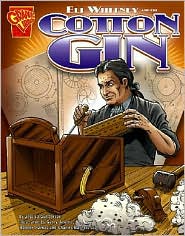Compiled by Mary Ann Hoberman and Linda Winston, this poetry collection is subtitled "a celebration of nature, science, and imagination." It definitely is just that. . When I saw this in the bookstore, I just couldn't put it down. While some might be turned off by the topic of science, it only piqued my interest further. Within its pages, this book offers almost 200 poems selected for their special attention to the natural world.
The book is divided into sections, to talk about the various wonders of life. For instance, the first section is called "Oh, Fields of Wonder," which is taken from a Langston Hughes poem (the first one in the section) about the birth of the stars, moon, sun, and even Hughes himself, and the other poems draw attention to the connection of life on earth to the stars and to the vastness, yet smallness of our existence. While some of the poems in the collection can seem too dense or "deep" for children, I think that teachers and students alike can gain a lot of inspiration and meaning from them, even if the "author's meaning" is not reached. Hoberman and Winston provide commentary at the beginning of each section and often include questions that go along with the poems, to guide or inspire new thinking about poetry and science. At the end of the book, there is a glossary of some of the complex science and poetry ideas introduced in the book, suggestions for further reading and research, a short blurb about each of the poets included, and an index of the poems and authors.
Not only does the book have so much beautiful, inspiring, and thought provoking poetry, it comes with a CD of 44 of the poems read either by the authors themselves or by other readers. I haven't explored the CD much yet, because I've been so captivated with the text itself, but it seems like a great companion, and a great asset for poetry teaching, especially for teachers who, like myself, feel self-conscious about their poetry reading. Further, it can allow students for whom the language may be too difficult to enjoy the poetry on their own.
There is not much in the way of illustrations, but in a way I think that is a testament to the beauty of the poetry itself. Where illustrations do appear, they are line drawings like the one featured on the cover or silhouettes of animals. If used in the classroom, perhaps allowing the students to illustrate the poems for themselves can be a way to engage their imaginations in interpretation of the poems.
I wanted to post a favorite poem on here to show examples of what beautiful poetry is included, but it is far too difficult to choose. I haven't finished the book because I've been savoring each poem individually (and annoyingly reading aloud to my friends), this beautiful poetry collection has so much to offer, maybe I'll update with a favorite later. I have only one word of caution with this collection, the compilers focus heavily on Darwin and evolution in their commentary in the book, which should be used knowledgeably by teachers. However, the poems can stand alone without any commentary, so I think this is still a great collection and asset to a teacher's library. Hoberman, the US Children's Poet Laureate, includes some of her own poetry, but with Winston, they select and bring together an excellent collection of poetry that sparks imaginative thought about the wonders that surround us. Interestingly, Winston, the co-compiler, is a cultural anthropologist and teacher. She has written about using family stories in the classroom to build a multicultural curriculum. This background is evident in the (somewhat) multicultural poetry selections. (See more about Linda Winston and her book
Keepsakes here
http://www.heinemann.com/products/07235.aspx or more about Mary Ann Hoberman, famed children's poet here
http://www.poetryfoundation.org/journal/article.html?id=182334)
 My reading group read How I Came to Be a Writer by Phyllis Reynolds Naylor. I knew that Phyllis Reynolds Naylor had written the Shiloh trilogy, but I had no idea what a prolific writer she was. As it turns out, she has been publishing her writing since the age of 16. Naylor started with short stories in church publications and then moved on to stories and columns in newspapers. What I found most surprising is how many books she has published. I had actually never heard of any of her other books, except Shiloh. Naylor shares how her initial love for writing has developed into a craft and the ways that the her experiences have affected and shaped her craft.
My reading group read How I Came to Be a Writer by Phyllis Reynolds Naylor. I knew that Phyllis Reynolds Naylor had written the Shiloh trilogy, but I had no idea what a prolific writer she was. As it turns out, she has been publishing her writing since the age of 16. Naylor started with short stories in church publications and then moved on to stories and columns in newspapers. What I found most surprising is how many books she has published. I had actually never heard of any of her other books, except Shiloh. Naylor shares how her initial love for writing has developed into a craft and the ways that the her experiences have affected and shaped her craft.







